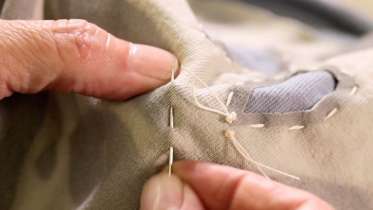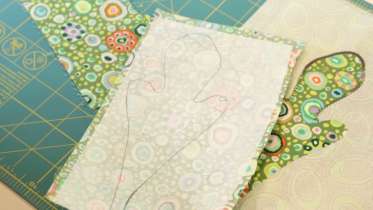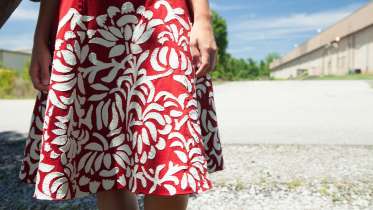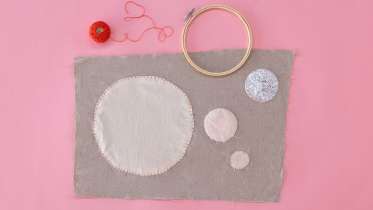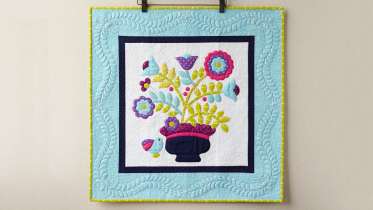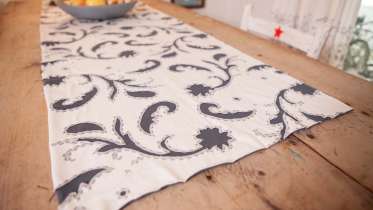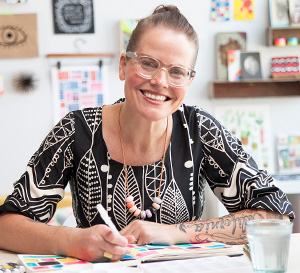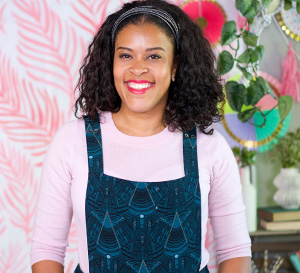Home > Learning Journeys > Appliqué 101
Appliqué 101
0/10 Classes Completed

The Physics of Sewing
Natalie Chanin
In this workshop, Natalie shares some of the old wives’ tales that she’s heard about stitching over the years and the truths that each tale reveals for smoother and easier hand sewing. After watching this workshop, you’ll have a deeper appreciation of the physics that determine how cotton jersey and thread behave and you’ll be ready to get stitching by hand.
Traditional Appliqué
Natalie Chanin
Appliqué is a beautiful way to add texture, pattern and color to a project. Natalie uses appliqué to stunning effect in her Alabama Chanin collection, and in this workshop, she'll share with you her basic technique. She’ll also show examples of how using different stitches and thread result in dramatically different finished looks.
How to Appliqué Circles Three Ways
Heidi Parkes
A circle is the shape of everything from atoms to stars, enduring the test of time. Skilled quilt artist Heidi Parkes incorporates many hand-sewn fabric circles into her quilts. In this class, she imparts her expertise in appliquéing circles of varying sizes using three distinct stitching techniques. She demonstrates options for using or not using a hoop and an iron, allowing you to select the most suitable method for your project.
Hand-Stitched Appliqué Quilts
Carolyn Friedlander
Return to slow, thoughtful hand stitching with this pretty skill-building class by Carolyn Friedlander. With a nod to the symmetry and style of Hawaiian quilting, you will create your appliqué piece like a paper snowflake and arrange it on your fabric background. Carolyn teaches you how to baste your appliqué piece by hand, how to stitch inside and outside curves and points, and how to efficiently remove basting stitches. This technique is perfect for making individual blocks or larger designs for show-stopping quilts.
Folk Flower Block
Anna Maria Parry
You don’t have to be an expert quilter to make this eye-catching quilt block. Modern quilter and fabric designer, Anna Maria Horner, shares how to create this folk-inspired flower block using floral print scraps. You will learn how to piece a background, fussy cut fabric, and reverse applique the flower and leaves using a sewing machine (no hand-stitching required). Make multiple Folk Flower blocks and piece them together however you’d like to make a quilt top that is blooming with color and texture.
Final Block Measures 12 ½” x 12 ½”
Final Block Measures 12 ½” x 12 ½”
Trudy Block
Carolyn Friedlander
The Trudy Block is a truly hands-on project where you'll learn how to hand-stitch a curved applique design from start to finish. Modern quilter Carolyn Friedlander masterfully demonstrates how to do needle-turn applique, showing how to baste and sew curved applique pieces onto a background fabric. Best of all, this project is a perfect way to piece blocks on the go since you won’t need a sewing machine to make it.
Appliqué Tunic
Amy Butler
Create a modern, two-tone tunic from jersey t-shirts, and add a graphic pop with an appliqué design of mixed prints. Amy shows how to make design decisions when you create your tunic, as well as how to prep and machine appliqué a design. This project incorporates a quilting technique into a fashion project, with Amy’s fresh sensibilities.
Learn Raw Edge Appliqué Quilting
Sue Nickels
Learn all about raw edge machine appliqué with quilting expert, Sue Nickels. In this class, Sue shares her signature technique for assembling a vibrant, floral appliqué quilt top. Each piece of appliqué uses just a bit of fusible web to keep it in place, and is then secured permanently with machine blanket stitching. You will learn how to stitch inner and outer points as well as curves and circles, complex units, and bias stems. This class will teach you everything you need to know to work any machine-appliqué pattern, large or small.
Reverse Appliqué Runner
Natalie Chanin
Reverse appliqué is the signature look of Natalie’s designs at Alabama Chanin. Natalie demystifies the process in this workshop, showing you how to add depth and texture to a cotton table runner. The technique is worked on two layers of fabric, with the top layer stenciled and then stitched to the backing layer. Once stitched in place, parts of the top layer are cut away to expose the color below for a satisfying final reveal.



